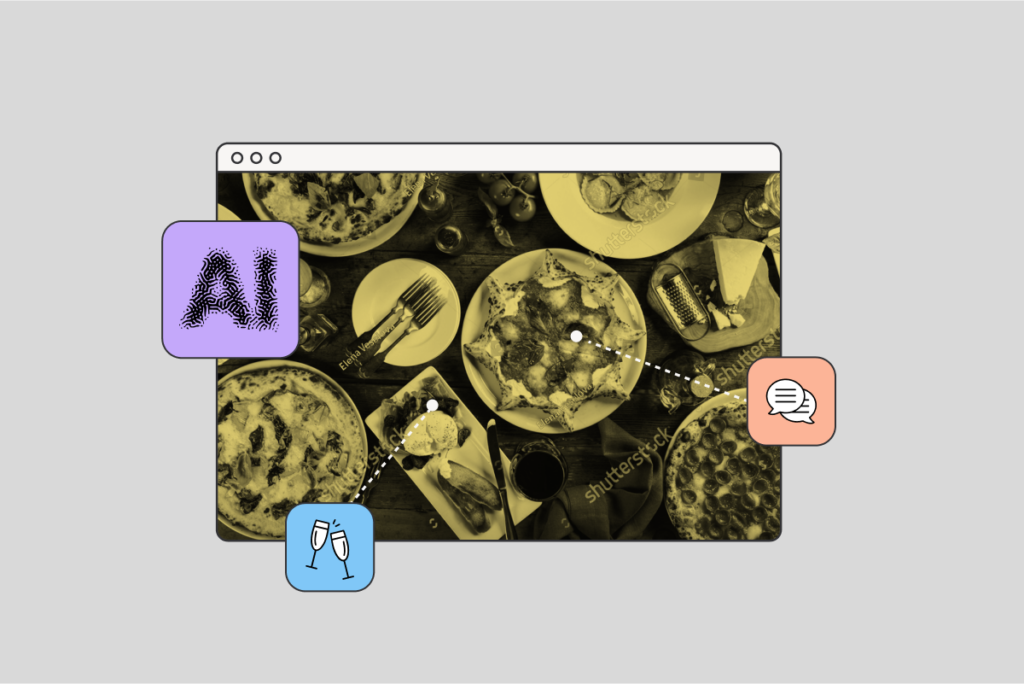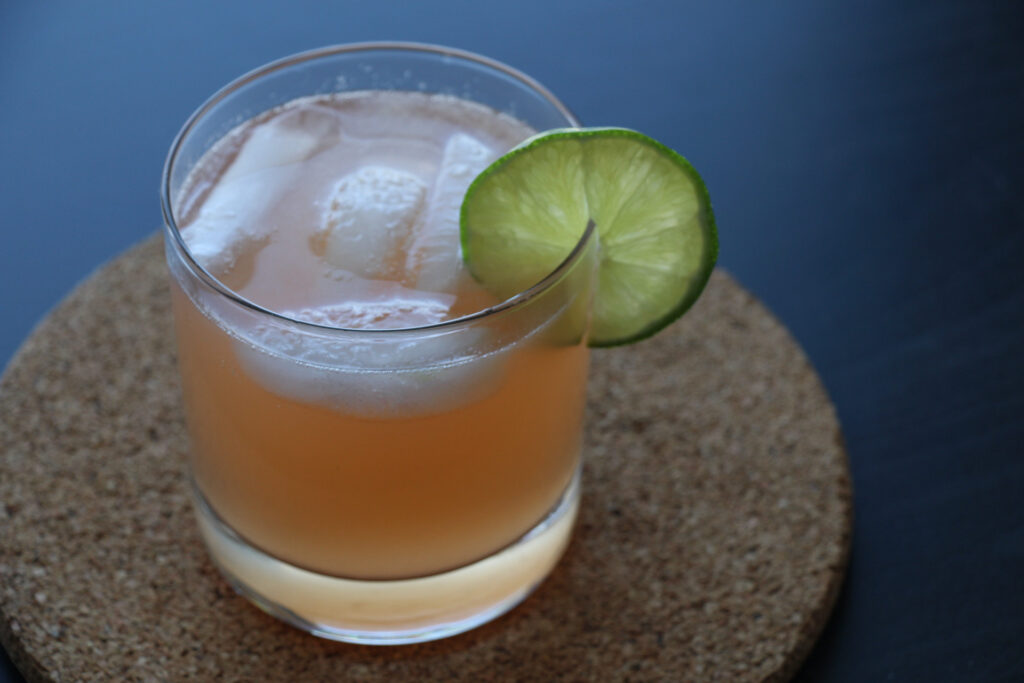Welcome to my AI-hosted dinner party

I just moved to Washington, D.C., and there's been a lot on my plate. I've been trying to figure out if there are ways AI can help me navigate it all. One of the first tasks my family tormented me about was, When can we come over for dinner?" The thought of planning and executing an entire dinner party right now? Terrifying. I could order takeout for all of us, but I enjoy cooking and hosting for people. But again, there's been too much going on. This is when I became enamored with the idea of putting AI to the test and giving it a shot: I'll let it plan the dinner for me.
Let me take you through the basics. For this party, I used OpenAI's ChatGPT. Obviously, the AI isn't doing the actual cooking here, I am, but I asked ChatGPT questions related to the setting of the party, number of guests, dishes and discussions for this event. For the dishes I cooked following ChatGPT's step-by-step directions, I gave the AI a score that factored in what my guests and I thought of its difficulty, creativity and taste. I followed up when appropriate to press the AI on its responses to my questions for further details (cooking instructions, etc.) and to see how much it could really take off my plate.
To start, I asked ChatGPT how I can make a good setting for a small dinner party for four. It prompted me with nine different suggestions, from the table decor to welcome drinks. I didn't have the time to incorporate all of these things, but here are a few I went with:
The settingMaking sure the vibes are immaculate is essential for any type of party. Usually, this is easy for me to handle, but I asked ChatGPT for a few suggestions to set the tone for my guests.
First, the music. It provided me with eight different options, the first being jazz. That's always an easy winner, so I went with a Miles Davis playlist. Second, it suggested I simmer a pot of fragrant spices on the stove to build an aroma. Boiling pots of cinnamon sticks and orange peels has been a go-to of mine for years after being raised in an Eritrean household, so that was an easy choice. Third was the most important vibe check: the dinner discussion. I asked ChatGPT for three topics, and it prompted me with: travel experiences (solid), food and culinary adventures (boring) and books and films (solid). Living in D.C., I preferred to make one of these political, so I pushed back and asked for one. The response was good: It suggested we touch on the positive and negative role of social media in politics and how they influence and inform political discourse. This answer was modern and relevant. Score: 9.6/10
The foodCocktail
Cocktails at a dinner party can really enhance the entire experience and break some of the social awkwardness. It's a huge plus if they pair well with the food you're serving, too. With this being my first dinner in D.C., a place where cocktails are a way of life, there was a lot of pressure on ChatGPT to deliver.
The question I asked: What are easy cocktails I can make for my dinner party of four?
The response I received: For some easy and delicious" cocktails for my party, ChatGPT recommended the following seven drinks: Margaritas, Mojitos, Cosmopolitans, Old Fashioned's, Moscow Mules, Paloma's or Gin and Tonics.
This party had tequila lovers, so I decided on Palomas. It's easy, citrusy and has a good punch.
 Garnished with lime, Palomas were an easy and crisp cocktail to make for my guests.
Garnished with lime, Palomas were an easy and crisp cocktail to make for my guests.The result: This was a perfectly fine cocktail that we enjoyed. However, what surprised my guests and I about this portion of the menu were the options that ChatGPT provided. We felt they were the typical Bar 101" drinks you'd tell your younger sibling that just turned 21 about. As fully grown adults, we hoped the options had more creativity to them. Score: 7/10
AppetizerA solid appetizer for guests is key, but I'm a firm believer that an amazing appetizer can really make a difference at a dinner party.
The question I asked: What are some easy but really good appetizers I can make for four guests at my dinner party?
The response I received: ChatGPT gave me eight different options with light directions: Caprese skewers, stuffed mushrooms, bruschetta, spinach and feta phyllo cups, deviled eggs, antipasto platter, cucumber bites and shrimp cocktail.
These appetizers are sure to impress your guests while allowing you to spend less time in the kitchen and more time enjoying the evening," ChatGPT prompted. Feel free to mix and match based on your preferences and dietary restrictions!"
The result: It's hard to beat the freshness of a good bruschetta with fresh bread and ripe tomatoes, so that's the choice I made here. When I picked my appetizer, ChatGPT provided a pretty classic recipe, which is fine in this case because making bruschetta isn't complex. This was very quick and easy to make and received a thumbs up from my guests. Score: 9/10.
Main dishThere are so many small elements of a dinner party that make it successful, but those contributions go out the window with a disappointing main.
The question I asked: What is an easy dinner with minimal prep work I can make for my dinner party of four?
The response I received: The first suggestion ChatGPT made in response to my question was spaghetti aglio e olio, with a full recipe included. That surprised me, as I was expecting it to provide a sheet pan type of dinner with salmon or chicken.
Pasta is a good option, but it definitely wasn't my first thought and something I was looking to cook. I pushed back and asked for alternative options. Ironically, it prompted me with a sheet pan roasted chicken and vegetable dish.
The result: The simplicity of this portion of the party is vitally important for me. I wanted a strong main dish with little prep work that wouldn't make me overthink. This provided that, but my guests had reservations about this being a bit too simple - it was something they felt they'd make for a quick weeknight dinner, not necessarily for a dinner party. It left us desiring more. Score: 6/10.
DessertEnding any meal on a high note with a strong dessert will send your guests out the door satisfied. Desserts can never be too simple, and they can have a wide variety of flavor options.
The question I asked: What are some easy dessert options I can make for my guests at my dinner party of four?
The response I received: ChatGPT offered seven options: a fruit tart, chocolate fondue, no-bake cheesecake, ice cream sundaes, lemon bars, mini pavlovas and affogato. A few of these were appropriate for a sleepover, not a dinner party - I love ice cream sundaes and lemon bars, but these disappointed me. My party had four coffee lovers, so affogatos felt right.
The result: These were so good. My guests and I wondered how much better they would've been if we made pasta the main dish. It was an easy and elegant dessert with rich and bold flavors. If you make these, invest in a good ice cream and fresh espresso beans. Score: 9.5/10.
After spending a few days planning and executing my AI dinner party, I'm convinced this method could be very valuable for some people. If the AI is made responsibly, I could support people using something like ChatGPT to plan other food-focused parties or even use it to help with things such as meal prep.
The days I spent with ChatGPT for my dinner party left me feeling unsatisfied with the creativity and diversity of its recommendations, though. I don't think AI companies should spend time focusing on suggesting Michelin star meals, per se. It's too complicated for consumers who are using the technology primarily looking for something simple.
But it can provide a wider range of options that consider the different backgrounds of consumers. Despite the many perks AI can provide, it can't replace the natural element of human creativity.
My guests and I enjoyed the experience with our ChatGPT planner, but talked a lot about how generic it felt as a whole. We felt like we were at a dinner party for characters on The Sims.
Even more importantly, it made my guests and I confidently feel that we, as African-Americans, were not the target audience for the AI. For example, we felt some of the food suggestions weren't recommendations a lot of Black people would take. We definitely didn't feel we were in the realm of the people it tailored its suggestions to. Of course, if I tailored the questions to the AI by including African Americans in the text, the technology would have probably provided options that fit us better, but that's the point: The default suggestions it shot back without it did not seem to cater to a diverse audience. A more inclusive suggestion that my guests and I would've enjoyed more would be an appetizer like a skillet cornbread or mini crab cakes.
While I don't have a solution, my experience has led me to believe that some AI platforms might be inadvertently overlooking the needs of a diverse audience. This raises important concerns about inclusivity in AI development.
To build responsible AI, we must prioritize diversity as this technology evolves. Then, we can create a more well-rounded and inclusive experience that everyone, including myself, can enjoy and feel a part of.
The post Welcome to my AI-hosted dinner party appeared first on The Mozilla Blog.